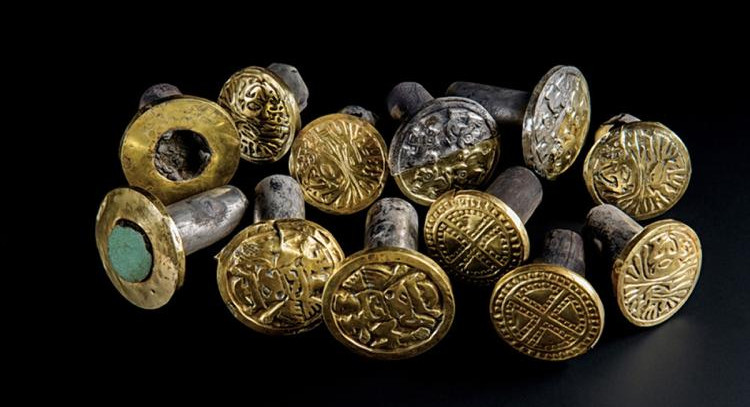Dress up the face of Peruvian nobles who lived 1,200 years ago
Archaeologists recreate the contours of a face in Peru.
Scientists reconstructed the face of Queen Huarmey , a noble woman who lived about 1,200 years ago, buried with many luxury jewelry and items in the tomb of El Castillo de Huarmey in Huarmey, Peru, National Geographic on December 13 reported.
Two archaeologists Miłosz Giersz and Pimentel Nita discovered the tomb in 2012. It used to be a large temple of Wari civilization , the civilization dominated this area several centuries before the Inca empire developed. The tomb was still intact and kept the remains of 58 aristocratic women, including 4 queens or princesses.
"This is one of the most important findings of the past few years , " said Cecilia Pardo Grau, a manager at the Lima Art Museum.
Scientists call a woman about 60 years old and are buried especially solemnly as Queen Huarmey. They found her remains in a private room, surrounded by lots of jewelry and luxury items such as gold earrings, copper axes and silver glasses.

Luxurious jewelry is found in the tomb of El Castillo de Huarmey.(Photo: National Geographic).
The team thoroughly analyzed the skeleton and discovered, like many aristocratic women in the region, that Queen Huarmey spent a lot of time sitting and operating the upper body with the characteristic sign of weaving.
This may explain the noble status of Queen Huarmey. In Wari's culture at that time, cloth was more valuable than gold and silver because fabric production took a lot of time. Ancient fabrics discovered in some other locations in Peru can be woven for two to three generations, Giersz said.
The ancients probably revered to Queen Huarmey with the ability to weave fabrics. She was buried with gold weaving tools. Her remains lacked a number of teeth, matching the phenomenon of cavities due to frequent chicha drinks, an alcoholic sweet drink made of corn that only Wari's upper class was allowed to enjoy.
The team also found a groove that led from her tomb to the outer chambers with traces of chicha. This groove allows people to perform chicha rituals with Queen Huarmey even when the tomb is closed."Even after Queen Huarmey died, people still drink with her, " Giersz said.
In early 2017, Giersz worked with Oscar Nilsson, an archaeologist famous for restoring his face, to recreate Queen Huarmey's face when he was alive. Using the 3D print skull model, Nilsson began to recreate the features on her face by hand.

The face of the noble woman was meticulously restored.(Photo: National Geographic).
Nilson relies on skull structure and other data to estimate muscle and meat thickness on bone. He also referred to other indigenous people living near El Castillo de Huarmey.
Nilsson took a total of 220 hours to restore the face of Queen Huarmey. He uses real hair from older women when recreating her hair style.
"If people consider the early stage to be highly scientific, then the back is quite artistic. That's when I need to add a bit of expression or vitality to the face, otherwise it will look very much like a mannequin , " he said. said.
"I have been doing this for 20 years and have a lot of great projects. But this project is really different so I can't refuse," said Nilsson.
The complete reconstruction is displayed from December 14 at a Peruvian artifact exhibition in the National Museum of Nationalities in Warsaw, Poland.
- Recreate the 1,600-year-old mummy face of Peruvian nobility
- The ancient Peruvian people burned beer stalls after the party
- Recreate ancient Peruvian lord face with 3D technology
- Explain the color of the dress
- Latest revealing about the dress that separates the net in the past 2 years
- Cypress spiders hit
- Detects animals they are 12 million years old with many modern facial features
- The restored face of the Queen of Egypt is controversial
- Visual illusion makes the world's most controversial dress appear again
- Discovered a 1,000-year-old Peruvian mummy in a sitting position
- Who lived 13,600 years ago, the oldest in America looked like this?
- Find the oldest dress in the world
 Discovered an ancient centipede fossil 99 million years old
Discovered an ancient centipede fossil 99 million years old Discovered bat-like dinosaurs in China
Discovered bat-like dinosaurs in China Discovered a 200-year-old bronze cannon of the coast
Discovered a 200-year-old bronze cannon of the coast Discover 305 million-year-old spider fossils
Discover 305 million-year-old spider fossils